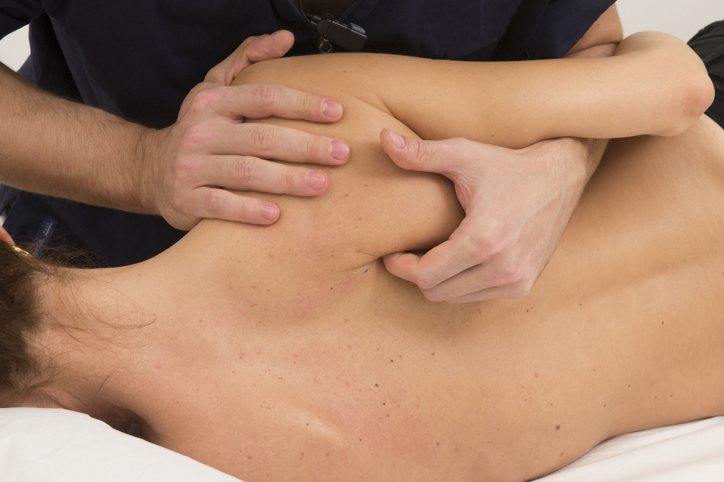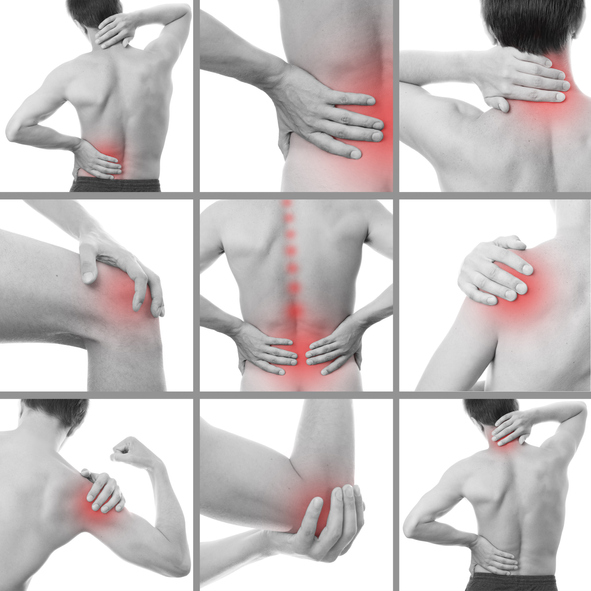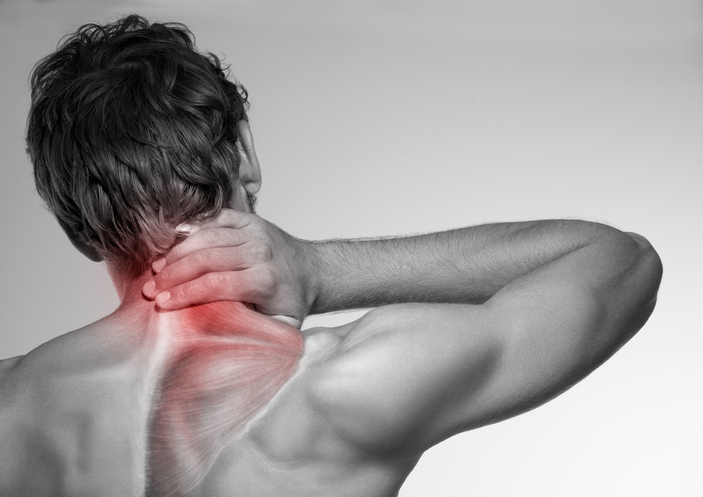NeuroMuscular Therapy

Neuromuscular Therapy (NMT) is a very specialized form of manual therapy that treats pain at its root: the nervous system. Neuromuscular therapists are educated in the physiology of the nervous system and its effect on the muscular and skeletal systems as well as kinesiology and biomechanics.
By definition, neuromuscular therapy is the utilization of static pressure on specific myofascial points known as trigger points (TrPs) to relieve pain. This comprehensive system of soft tissue manipulation creates a balance of the central nervous system with the musculoskeletal system. In a healthy individual, nerves transmit impulses to the body very slowly. Arndt’s Law states that the body’s activity is affected by different levels of stimuli to nerve centers. Injury, trauma, postural distortion, or stress cause nerves to speed up their transmission, inhibiting equilibrium and making the body vulnerable to pain and dysfunction. It is therefore necessary to stabilize neurological activity to healthy levels which will maintain normal function and promote overall health.
A primary focus of neuromuscular therapy is to understand the formation, etiology and treatment of myofascial trigger points (TrPs). In neuromuscular therapy a special effort is made to locate the source of referred pain including any perpetuating influences and eliminating them while paying attention to correct negative postural and bio-mechanical patterns.
What is a Trigger Point?
Simons (Lewit & Simons, 1984) described the evolution of trigger points in the following way:
“In the core of the trigger lies a muscle spindle that is in trouble for some reason. Visualize a spindle like a strand of yarn in a knitted sweater….. a metabolic crisis takes place, which increases the temperature locally in the trigger point, shortens a minute part of the muscle– like a snag in a sweater – and reduces the supply of oxygen and nutrients into the trigger point. During this disturbed episode an influx of calcium occurs and the muscle spindle does not have enough energy to pump the calcium outside the cell where it belongs. Thus a vicious cycle is maintained and the muscle spindle can’t seem to loosen up and the affected muscle can’t relax.”

Five Elements That Cause Pain:
Ischemia: Lack of blood supply to soft tissues which causes hypersensitivity to touch.
Trigger Points: Highly irritated points in muscles which refer pain or sensation into other areas. These occur when nerves fire impulses at a rapid speed into an area of the body other than that which has been traumatized. Because of this the cause of severe pain may be quite removed from the actual site of pain.
Nerve Compression or Entrapment: Pressure on a nerve by soft tissue, cartilage or bone. Realigning vertebrae without treating associated soft tissues frequently treats the symptom and not the cause. Treating the surrounding soft tissues that cause or maintain the dislocation is imperative.
Postural Distortion: Imbalance of the muscular system resulting from the movement of the body off its axis. The body will compensate in an effort to retain balance. Trauma, gravitational pressure, or psychological patterning causes the soft tissue to become thicker, denser, and harder. Muscle contraction, body distortion, and pain are the result. By determining why the compensation has occurred, the distorted patterns can be eliminated, proper posture restored, and associated pain diminished or eliminated in most cases.
Biomechanical Dysfunction: Imbalance of the musculoskeletal system resulting in faulty movement patterns (i.e., poor lifting habits, bad mechanics in a golf swing or tennis stroke, working at a computer for long periods, etc.). Repetitive strain of certain soft tissues results in adapted movement patterns that become muscular habits and must be reeducated.
Factors that exacerbate trigger point activity:
- Nutritional deficiency, especially vitamin C, B-complex and iron
- Hormonal imbalances (low thyroid, menopausal or premenstrual situations, for example)
- Infections (bacteria, viruses or yeast)
- Allergies (wheat and dairy in particular)
- Low oxygenation of tissues (aggravated by tension, stress, inactivity, poor respiration)
How Is Neuromuscular Therapy Performed?
The neuromuscular therapist develops a treatment plan by screening gait patterns and measuring the positioning of the body on the coronal, midsagittal and horizontal planes. These measurements provide reference points from which to determine distortion patterns. An exacting analysis of proper posture and biomechanics explains the cause and effect relationship to pain.
The therapist then palpates the soft tissue to determine if there are ischemic, trigger points, nerve compression and/or entrapment possibilities. When the body is aligned, the tone of the tissues improves. As tone is normalized, the nervous system is balanced.
The appropriate pressure to use a during a neuromuscular therapy treatment varies depending upon age, fitness, nutritional health and postural patterns of the patient, as well as the extent of the trauma and toxicity level of the tissues. The proper level of pressure elicits a moderate state of discomfort, although most patients describe it as “good pain”. If pressure is too light, it does not produce the necessary stimulation of nerve receptors to produce the desired therapeutic response. When adhesions are found in the tissues, deeper pressure may be used by working across muscle fibers.
What other treatments should I consider for pain management?
We look forward to being part of your Wellness Team! Schedule your Trigger Point Massage in Seattle HERE


